The Story of a Warrior Princess
It was Labor Day weekend 2016. Lauren Seiler and her husband, Andy, were looking forward to spending the weekend with their three-year-old son and Andy’s…
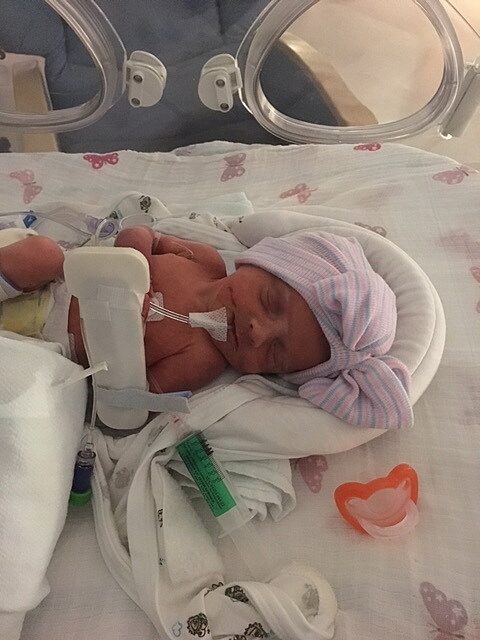
Update your location to show providers, locations, and services closest to you.
Amniotic fluid is a clear, slightly yellowish liquid that surrounds the unborn baby (fetus) during pregnancy. It is contained in the amniotic sac.
While in the womb, the baby floats in the amniotic fluid. The amount of amniotic fluid is greatest at about 34 weeks into the pregnancy (34 weeks gestation), when it averages 800 mL. About 600 mL of amniotic fluid surrounds the baby at full term (40 weeks gestation).
The amniotic fluid constantly moves (circulates) as the baby swallows and "inhales" the fluid, and then releases it.
The amniotic fluid helps:
Too much amniotic fluid is called polyhydramnios. This condition can occur with multiple pregnancies (twins or triplets), congenital anomalies (problems that exist when the baby is born), or gestational diabetes.
Too little amniotic fluid is known as oligohydramnios. This condition may occur with late pregnancies, ruptured membranes, placental dysfunction, or fetal abnormalities.
Abnormal amounts of amniotic fluid may cause the health care provider to watch the pregnancy more carefully. Removing a sample of the fluid through amniocentesis can provide information about the sex, health, and development of the fetus.
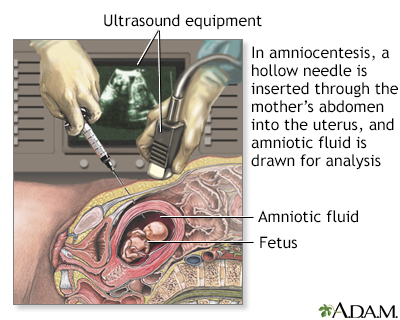
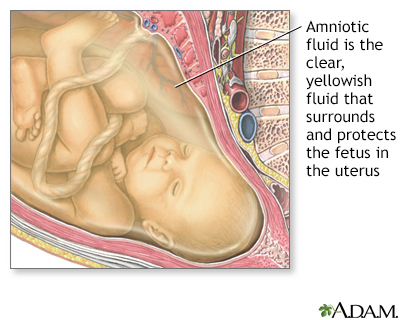
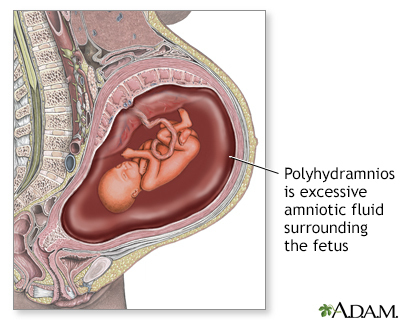
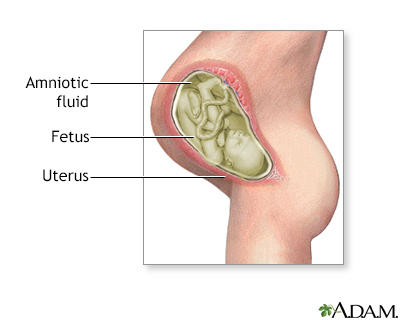
Burton GJ, Sibley CP, Jauniaux ERM. Placental anatomy and physiology. In: Landon MB, Galan HL, Jauniaux ERM, et al, eds. Gabbe's Obstetrics: Normal and Problem Pregnancies. 8th ed. Philadelphia, PA: Elsevier; 2021:chap 1.
Gilbert WM. Amniotic fluid disorders. In: Landon MB, Galan HL, Jauniaux ERM, et al, eds. Gabbe's Obstetrics: Normal and Problem Pregnancies. 8th ed. Philadelphia, PA: Elsevier; 2021:chap 28.
Ross MG, Beall MH. Amniotic fluid dynamics. In: Lockwood CJ, Copel JA, Dugoff L, et al, eds. Creasy and Resnik's Maternal-Fetal Medicine: Principles and Practice. 9th ed. Philadelphia, PA: Elsevier; 2023:chap 4.


It was Labor Day weekend 2016. Lauren Seiler and her husband, Andy, were looking forward to spending the weekend with their three-year-old son and Andy’s…

Written by Amy Y. Vittor, University of Florida From October 2015 to January 2016, there were almost 4,000 cases of babies born with microcephaly in Brazil.…
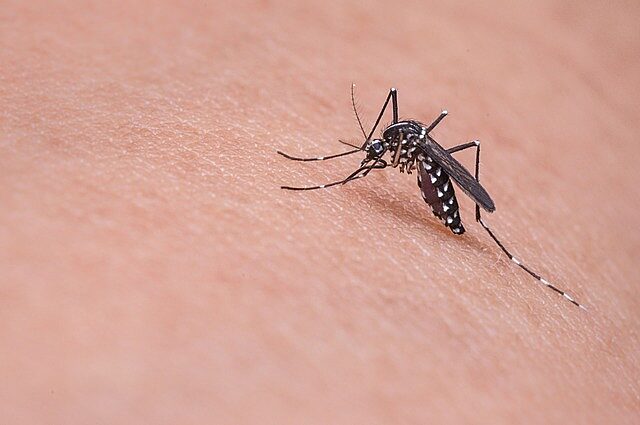
Cells with the potential to restore sick or worn out organs are showing up in more places in the human body. In a recent...